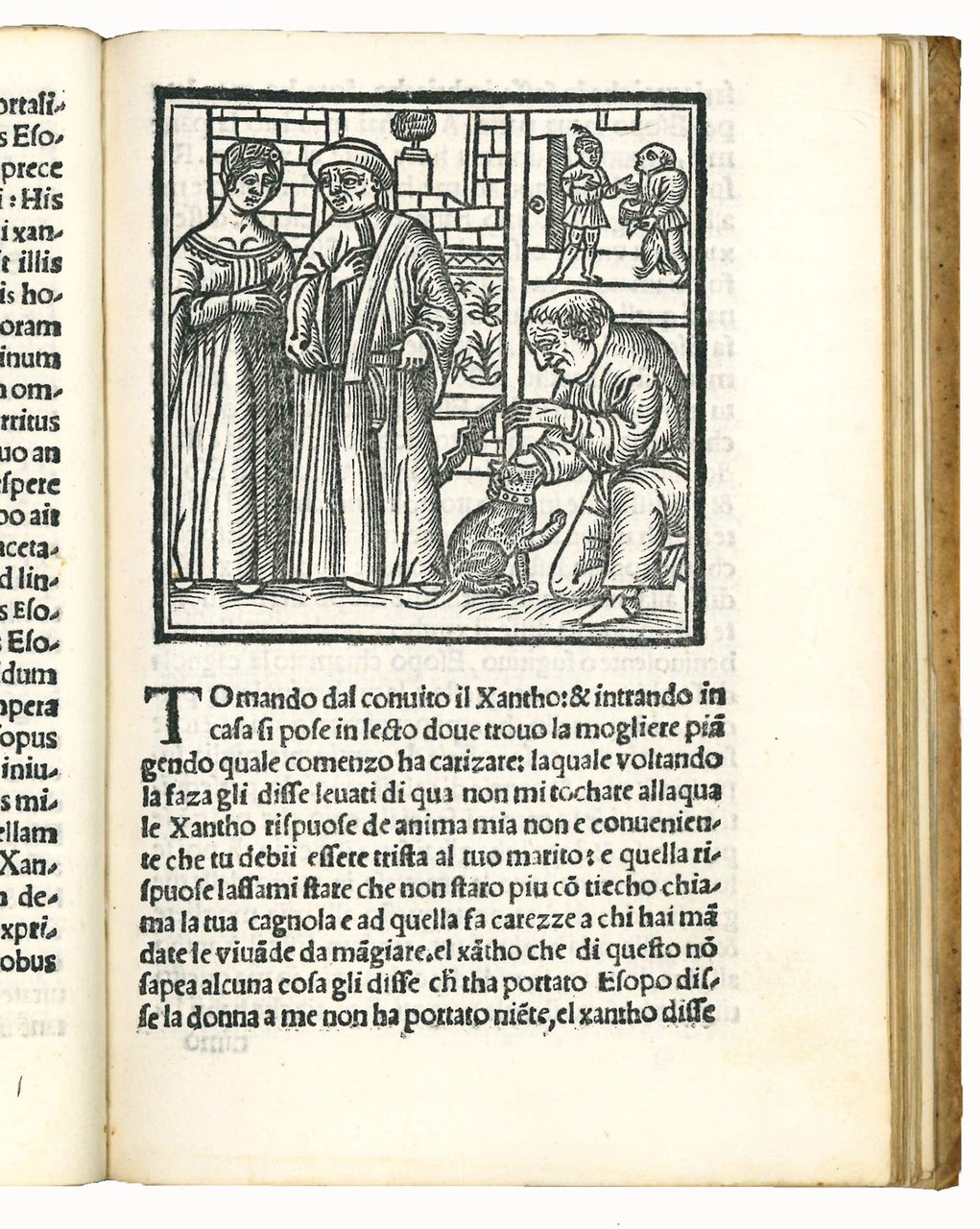
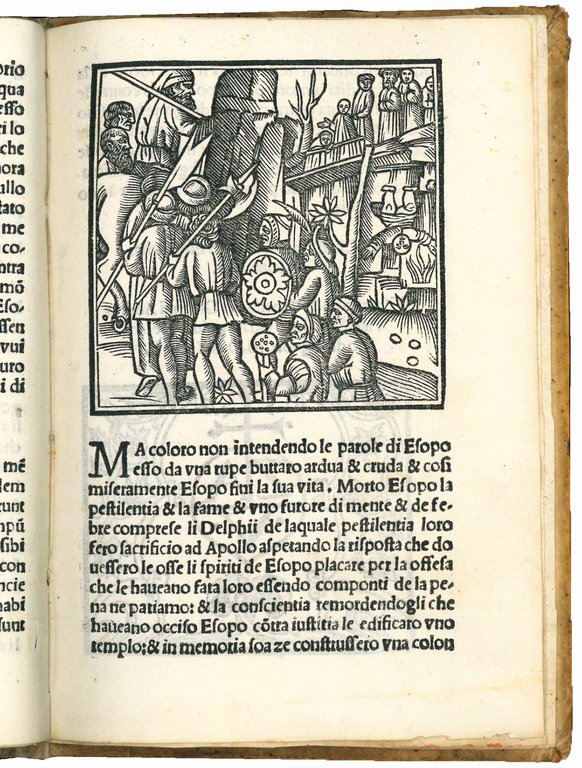
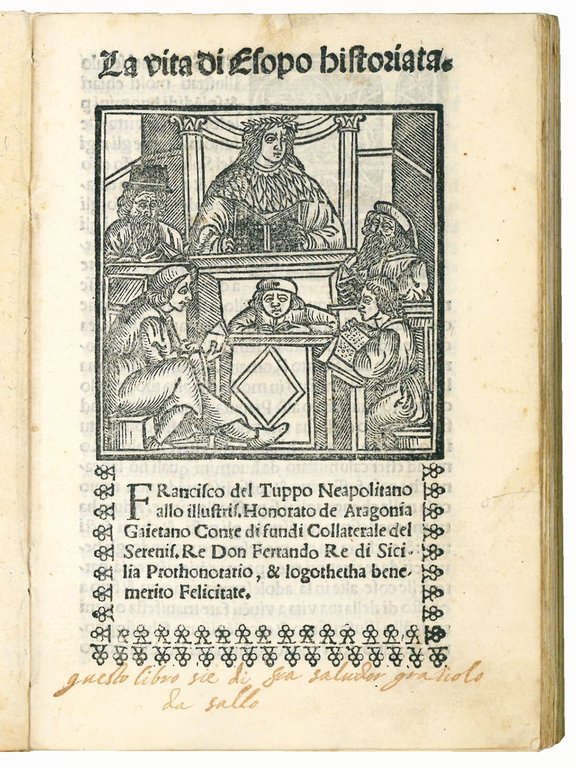
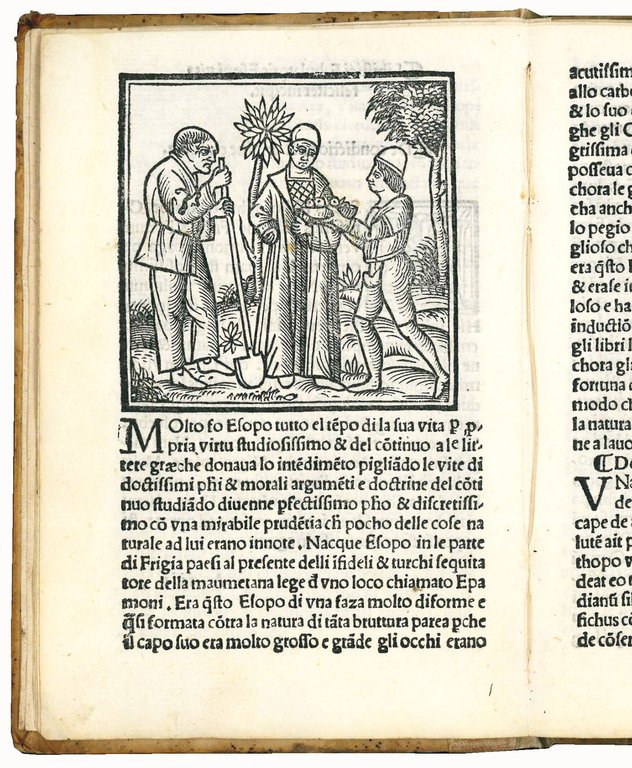
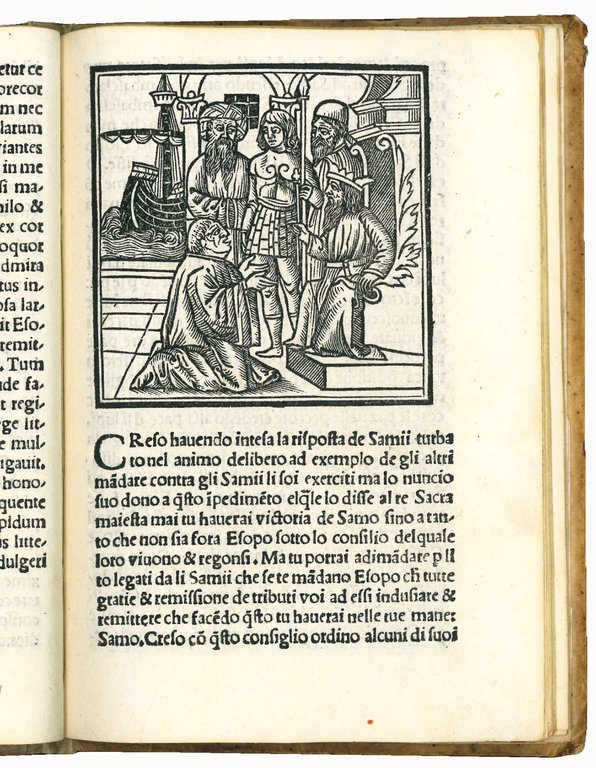
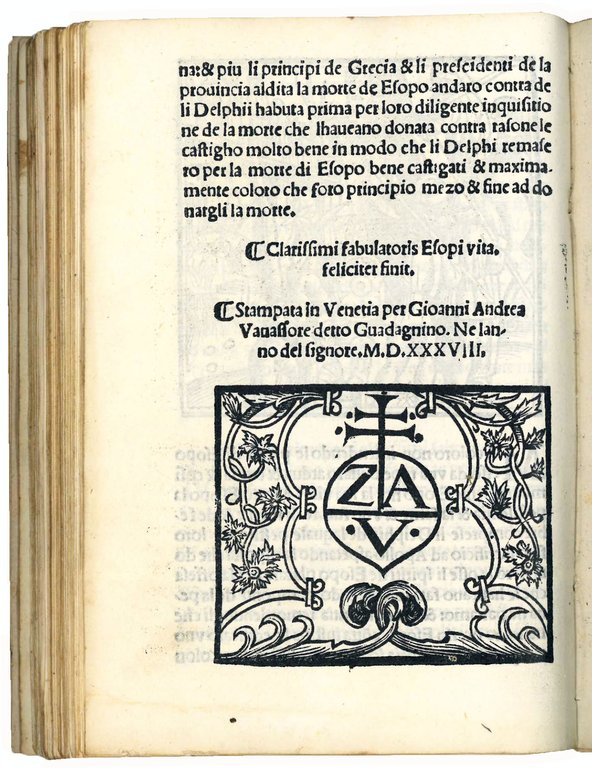
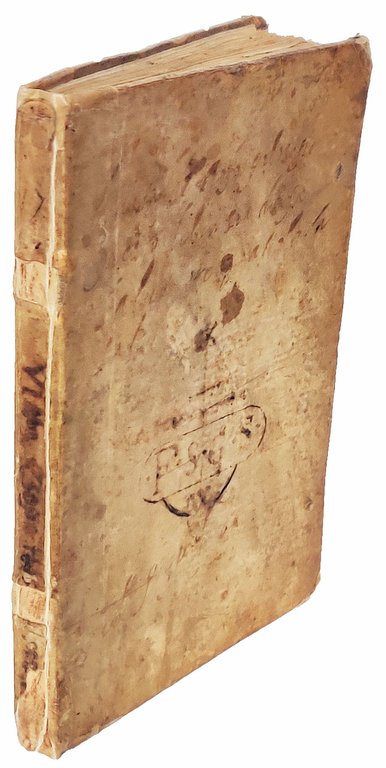
Rare and modern books
DEL TUPPO, Francesco (ca. 1443-ca. 1506)
La vita di Esopo historiata. Colophon: Stampata in Venetia per Gioanni Andrea Vavassore detto Guadagnino, M.D.XXXVIII
Giovanni Andrea Valvassori, 1538
9500.00 €
Govi Libreria Antiquaria
(Modena, Italy)
The correct shipping costs are calculated once the shipping address is entered during order creation. One or more delivery methods are available at the Seller's own discretion: Standard, Express, Economy, In-store pick-up.
Bookshop shipping conditions:
For items priced over €300, it is possible to request an instalment plan from Maremagnum. Payment can be made with Carta del Docente, Carta della cultura giovani e del merito, Public Administration.
Delivery time is estimated according to the shipping time of the bookshop and the courier. In case of customs detention, delivery delays may occur. Any customs duties are charged to the recipient.
For more infoPayment methods
- PayPal
- Credit card
- Bank transfer
-
-
Find out how to use
your Carta del Docente -
Find out how to use
your Carta della cultura giovani e del merito
Details
Description
Reprint of the second Valvassori edition of 1533. Del Tuppo's Vita Aesopi was first printed in Naples in 1485 together with Aesop's fables. It had a remarkable success and was reprinted several times until the mid 16th century. With the only expection of the Aquila edition of 1493 which contains both the Vita and the Fabulae, all subsequent editions reproduce only the Vita. Valvassori issued two editions in 1533, one dated 8 March of 74 leaves and one of 72 leaves, on which the present is based.
The title-page illustration is a copy of the woodcut used in Vergil's Moretum (Venice, Pasini, September 1525). The 23 woodcut vignettes in the text are copies of those used in the Bonelli edition of 1492.
Francesco del Tuppo was a Neapolitan printer, bookseller and man of letters who carried out various administrative tasks for the Aragonese. First as a partner in S. Riessinger's printing house (the first the be established in Naples), then, after 1478, as its director, he printed, among other books, his own translation in an Italian vernacular full of terms from the Neapolitan dialect, of Rinuccio da Castiglione d'Arezzo's Latin version of Aesop's Life. The choice of the subject and the language was certainly motivated by the popularity of the Aesop tradition and Del Tuppo's poor knowledge of Latin (P. Farenga, Del Tuppo, Francesco, in: “Dizionario Biografico degli Italiani”, vol. 38, Rome, 1990, s.v.).
The work is dedicated to Onorato Gaetani, Count of Fondi, promoter and financier of the first edition. The Vita Aesopi is a composite work, made up of removable and interchangeable parts, which can be taken out and added to without altering significantly the narrative structure. Different human types and cultural paradigms from different epochs converge in the figure of the protagonist, which has the double role of agens, as main character in his biographical events, and of auctor, as inventor of the fables closely linked to these events. Over time, however, the second of these two functions prevailed, and some anecdotes originally included in the biographical narrative began to circulate as autonomous tales. This is the case of the tales of the gardener crushed by the greater abundance of wild herbs than of the plants he cultivates in his vegetable garden; of the sheep and the pig led to the slaughterhouse; of the two paths, that of virtue and that of slavery, between which man must choose; of the wolves who, by deception, kill the shepards; of the cicada caught by the hunter; of the pieces of wood mistaken from afar for large ships; of the two foxes and the rooster; of the industrious man who leaves everything to devote himself to agriculture; of the old man who wants to see the city at least once in his life; and of the exocean who escapes the sturgeon only by dying. Every chapter opens with the Latin text followed by Del Tuppo's vernacular version (cf. S. Rovere, L'Esopo napoletano di Francesco del Tuppo, Pisa, 2017, pp. 1-58).
Edit 16, CNCE39415; Essling, 617; Sander, 105; S. Rovere, Op. cit., p. 88.

